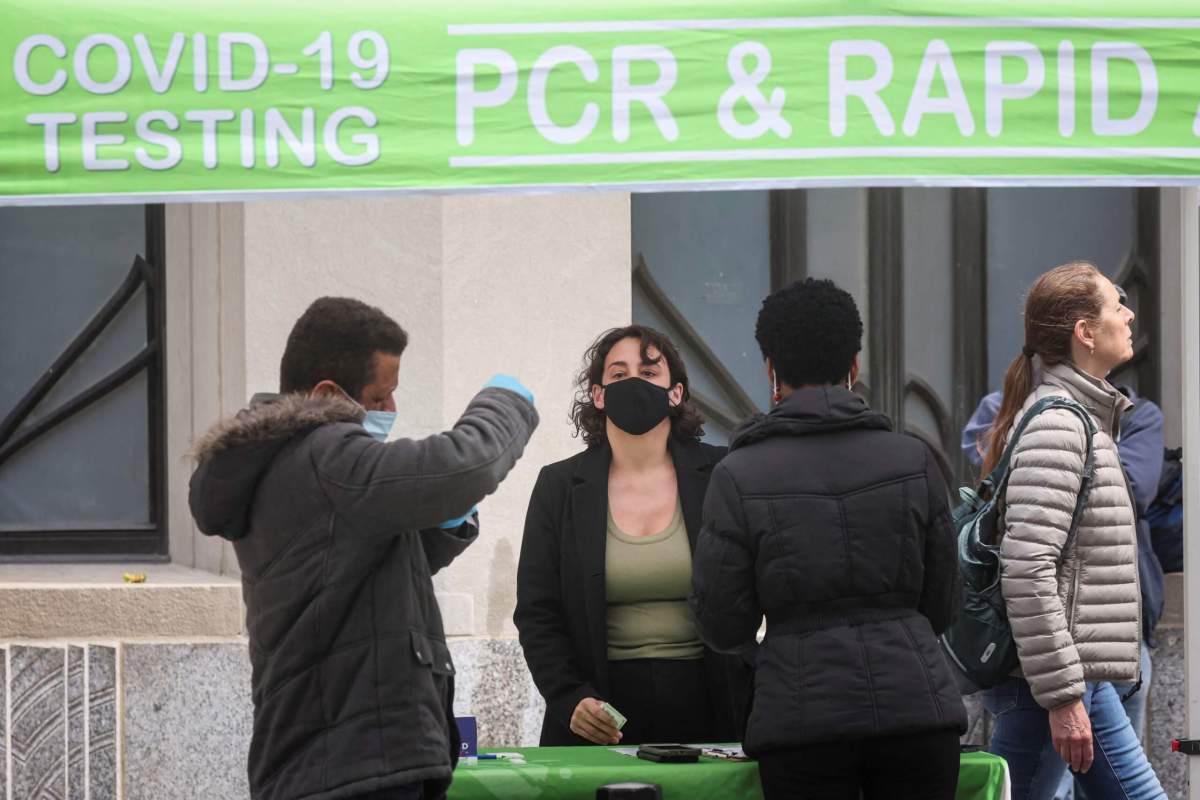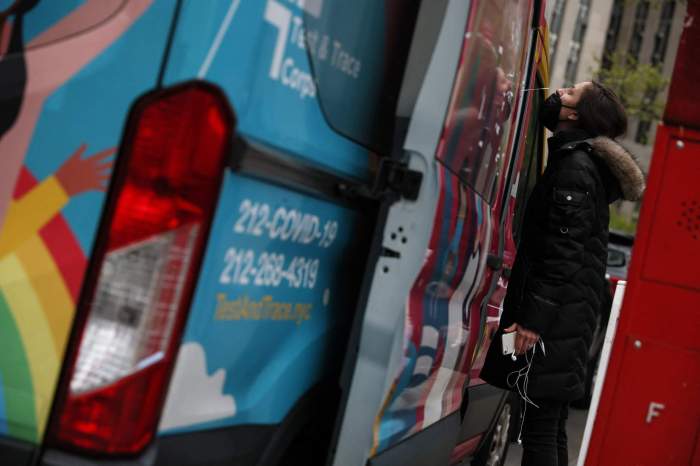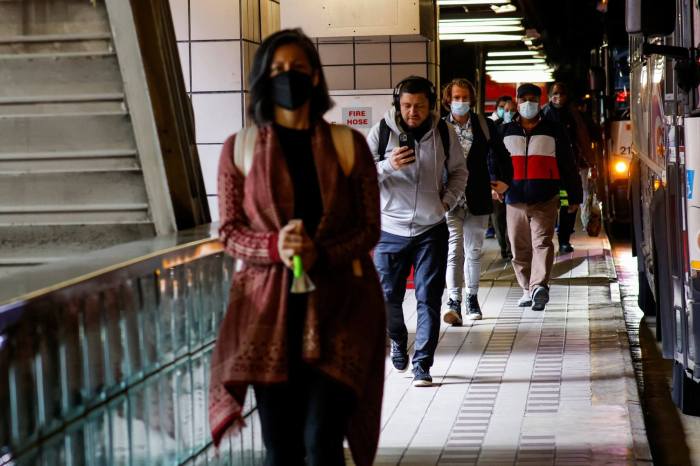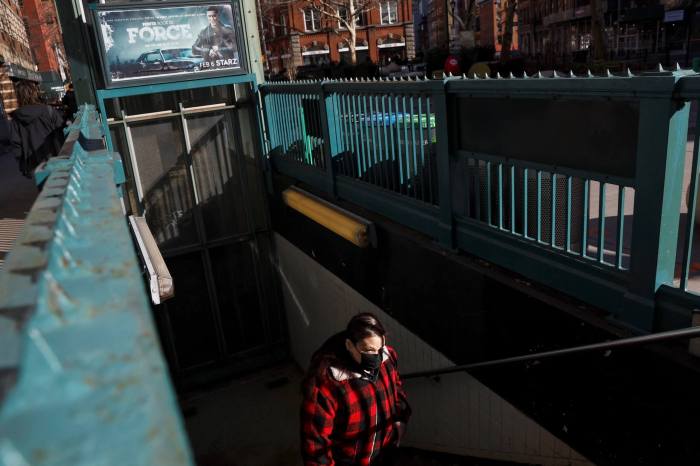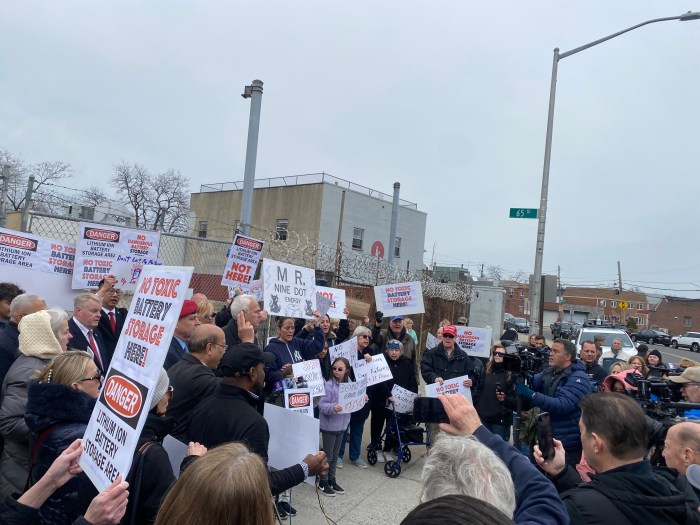Thousands of New Yorkers contracted COVID-19 last week as infection rates continue to tick upward in yet another reminder that the pandemic remains far from over.
Approximately 69 communities across the Five Boroughs registered 100 or more new cases between May 4-10, according to the latest data from the city’s Department of Health and Mental Hygiene. The city’s 7-day positivity rate was at 8.04% as of May 13, though New York remains in a “medium” alert status — meaning that New Yorkers are advised, not required, to wear masks in public indoor settings and take other precautions to guard against infection.
Spurred by the BA.2 subvariant, COVID-19 is now spreading at a rapid rate across the city. The citywide transmission rate, as of May 10, was up to 303.33 cases per 100,000 residents, with Staten Island (390.43), Manhattan (365.63) and Queens (332.72) having transmission rates outpacing the city.
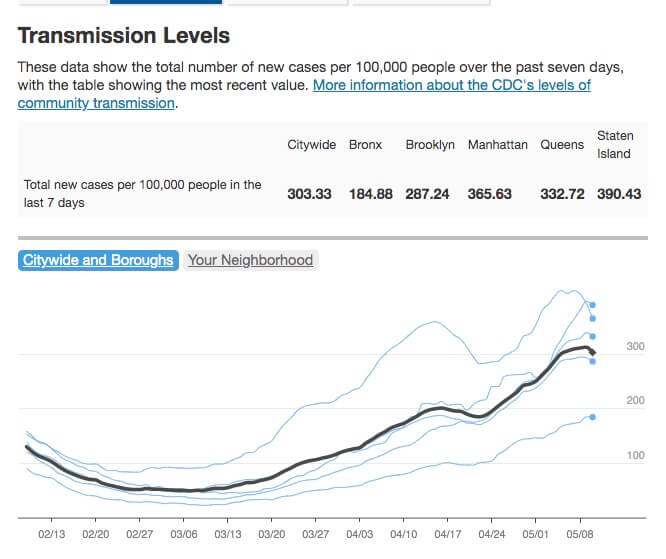
Ten communities across New York registered 200 or more new COVID-19 infections between May 4-10. Flushing/Murray Hill/Queensboro Hill (ZIP 11355) had the most in the city at 287, with a 7-day positivity rate of 16.27%.
An adjacent area of Flushing/Murray Hill (11354) logged 203 cases and a 16.36% positivity rate, while Elmhurst (11373) was the only other Queens community with more than 200 new infections, at 207.
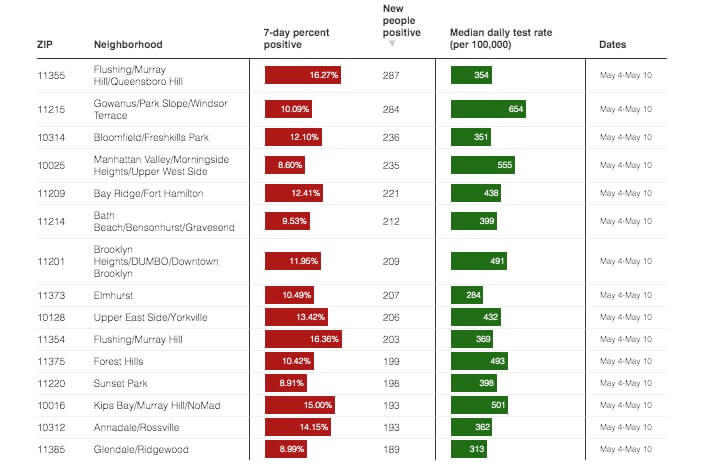
Queens also had the community with the highest 7-day positivity rate; the Hunters Point area of Long Island City (11109) saw a 19.03% positivity rate, but only 43 new cases were detected there during May 4-10.
In fact, Queens had 10 of the 15 New York City areas with the highest 7-day positivity rates during the period. Yet the high rates do not necessarily translate into hundreds of cases in each area. For instance, Breezy Point (11697) registered an 18.07% positivity rate, but only 15 cases were detected there in the lightly-populated hamlet on the western tip of the Rockaway Peninsula.
Bellerose/Douglaston/Little Neck (11004) had the third-highest rate in the city at 17.09%, but 68 cases were detected there.
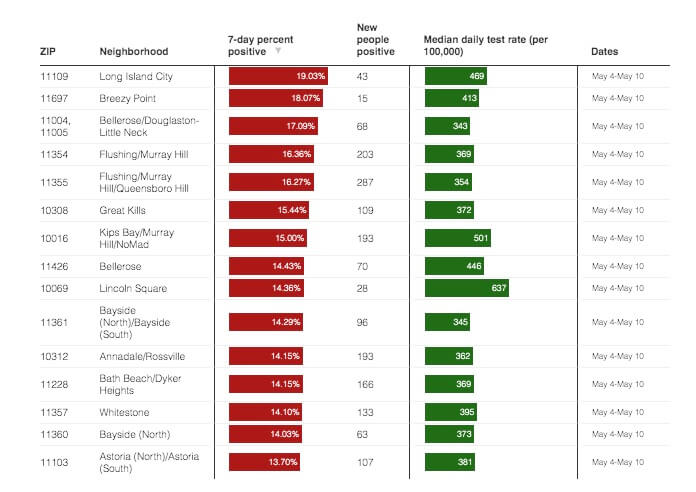
On the flip side, just two New York City communities had less than 10 new COVID-19 cases detected between May 4-10: an area of the Financial District of Manhattan (10004, four cases) and City Island, Bronx (10464, four cases).
Even with infections climbing again, hospitalizations remain stable, with a daily 7-day average of 54 admissions reported as of May 13. Deaths are also very low, with a daily average over the last 7 days of just three.
The low hospitalization and death rates reflect the effectiveness of COVID-19 vaccines and booster shots, as well as antiviral medication administered to patients suffering symptoms.
Though health experts have advised fully-vaccinated New Yorkers to get a booster shot to enhance their resistance to COVID-19, the additional dose rate has held steady at just 38% of the city’s population. Getting the booster on top of the vaccine has been shown to be much more effective at preventing illness.
To find where to get a booster shot, visit vaccinefinder.nyc.gov.
If you test positive for COVID-19, call your physician or 212-COVID-19 right away to see if you can take antiviral medication.



